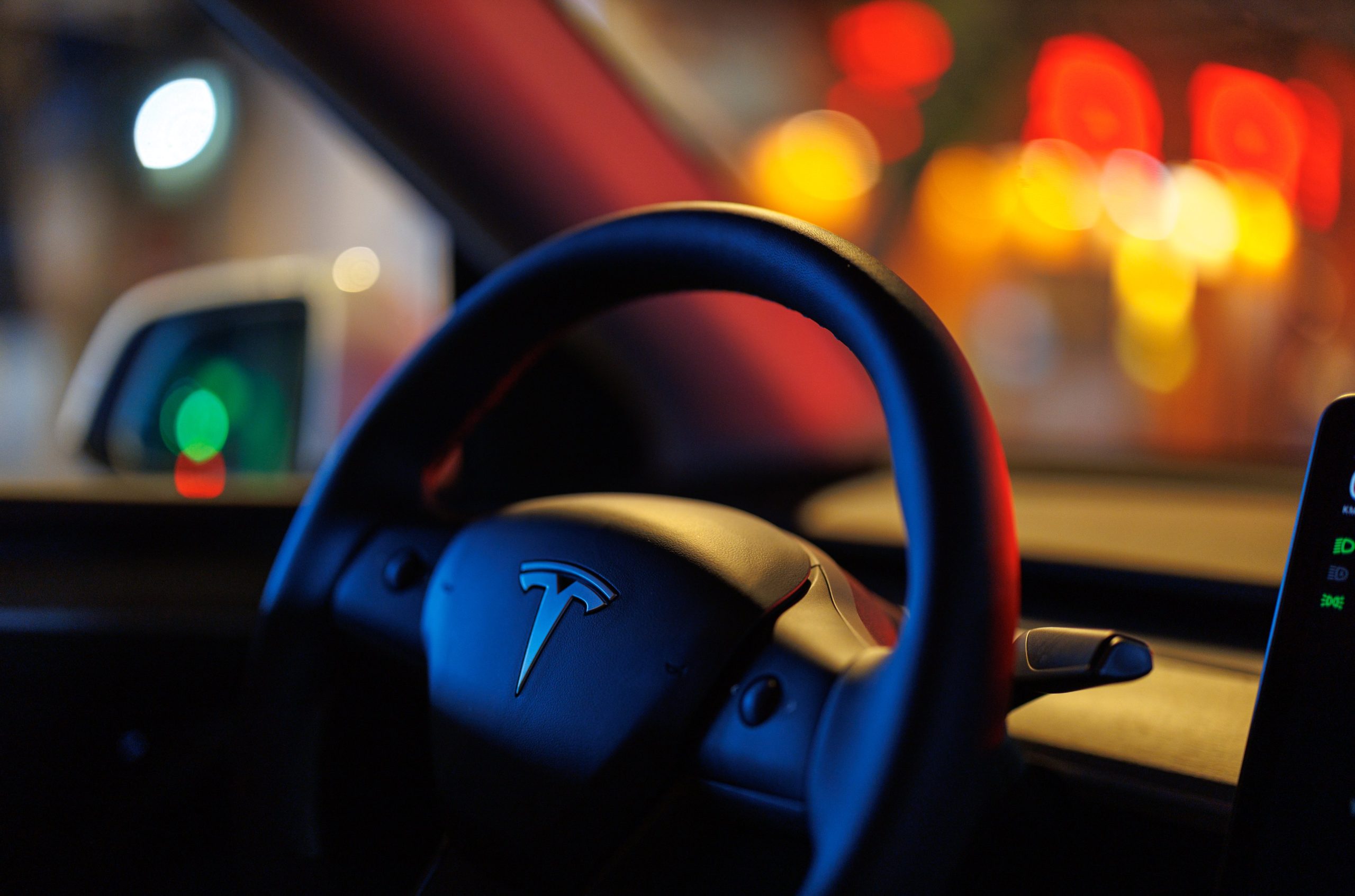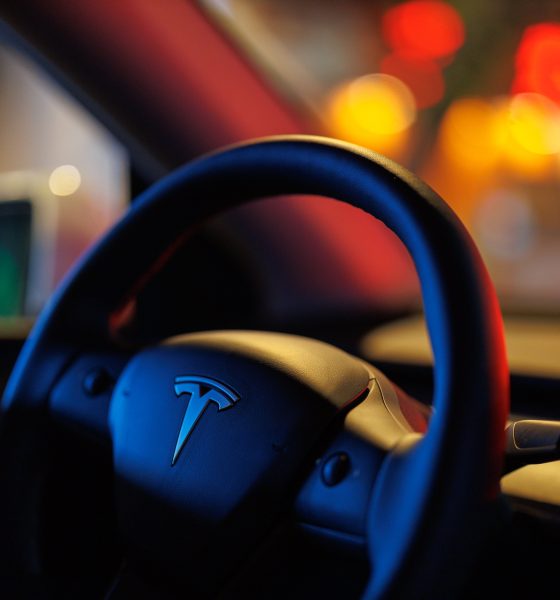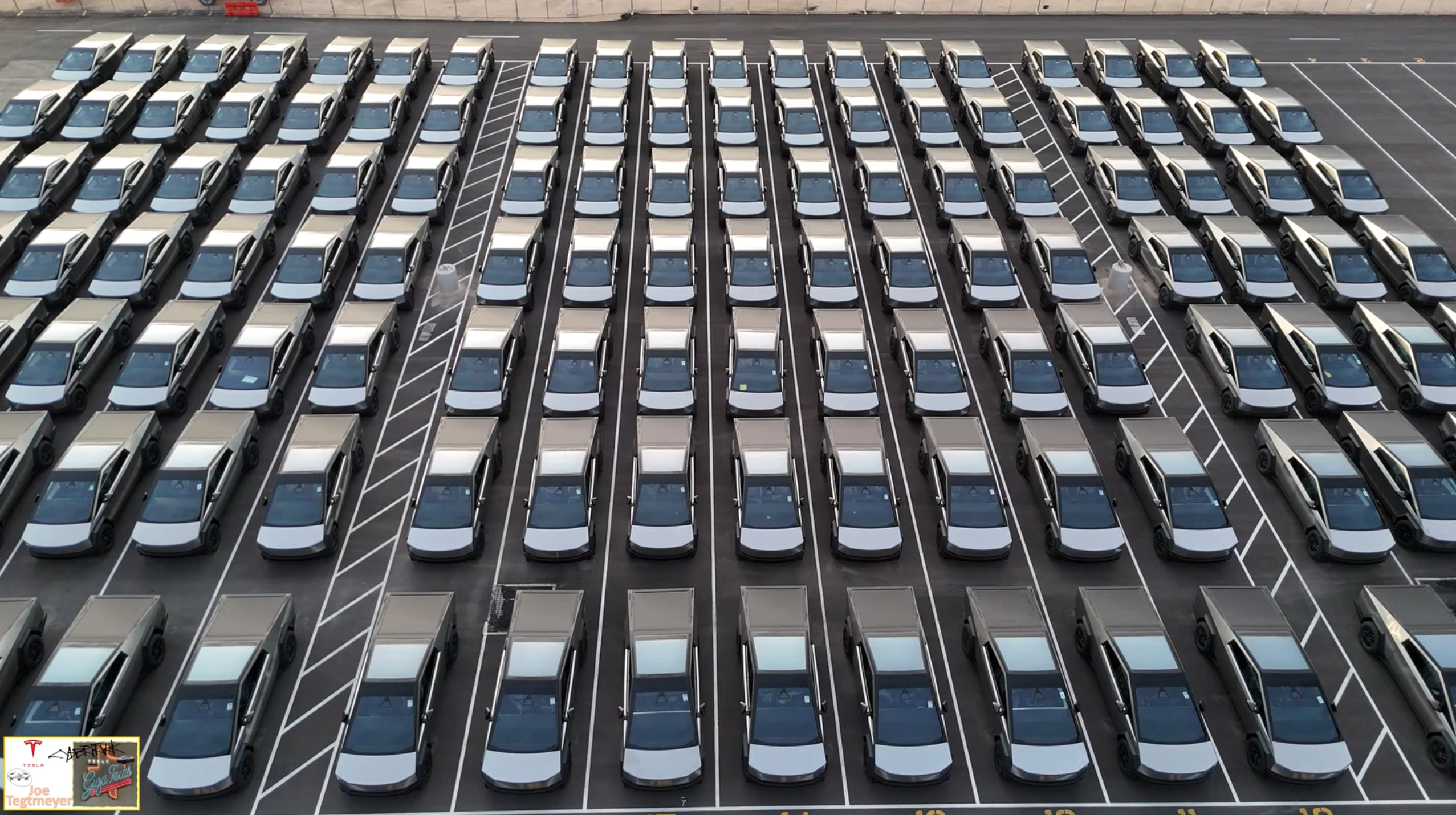

Investor's Corner
Tesla investors post questions for TSLA Q3 2023 earnings call
Tesla’s (NASDAQ:TSLA) third-quarter 2023 earnings call is less than a week away, and investors are already submitting questions for the event’s Q&A session.
Similar to past earnings calls, Tesla is gathering inquiries from both retail and institutional TSLA shareholders using investor communications platform Say. As of writing, Say’s webpage for the Tesla Q3 2023 earnings call features a variety of notable questions, spanning topics from Tesla’s factories like Gigafactory Mexico to future projects like Optimus and the dedicated Robotaxi.
Following are the top ten questions from TSLA retail investors that are currently listed in Say:
- Can you provide a progress update on the 4680 cell, particularly progress towards performance improvements and cost savings outlined on battery day? Thank You!
- How’s FSD v12 progress going? What are the biggest challenges? How will you extract a mind’s eye view from an end-to-end network?
- How many Cybertruck deliveries do you anticipate for 2024?
- Do you expect the 4680 ramp to support both Cybertruck and Model Y production next year?
- Will Optimus be working on Gigafactory lines next year? If so, how many would you guess will be deployed?
- Can you give us an update on your expected ramp for the Tesla Semi?
- Are any Tesla suppliers common with Ford/GM/Stellantis at significant solvency or operational risk based on the UAW strike? Is your analysis of your supply base risk complete?
- When do you expect Model 3 Highland to be available in the US?
- Tesla Model 3 and Y now cost approximately the same as an average non-luxury car ($31.9k) and non-luxury SUV ($35.7k) after tax credit in the US despite better features. Why does Tesla repeatedly choose price cuts over other cheaper strategies to grow volumes, such as educational ads?
- Is there a schedule-defining issue w/ the Cybertruck remaining?
Following are six questions from TSLA institutional investors that are currently aggregated by Say:
- Could you please provide an update on (i) capacity expansion plans for the company’s factories in Berlin and Austin and (ii) the opening schedule of Gigafactory Mexico?
- Do you have an approximate timeline in mind for the Robotaxi (driven or non-driven)? What excites you most about how this project is progressing?
- Neural net path planning represents a significant advance in capability and safety for FSD. What steps is Tesla taking to make this technology available outside the US?
- How do Model 3 Highland gross margins compare to gross margins for legacy Model 3?
- Current sell-side consensus assumes that Tesla will deliver ~2.3 million vehicles in 2024, representing 28% growth vs. 2023 guidance. Is this growth rate achievable without any mass-market launches in 2024, and when does Tesla expect to return to its 50% long-term CAGR?
- Mercedes is accepting legal liability for when its Level 3 autonomous driving system, Drive Pilot, is active. Is Tesla planning to accept legal liability for FSD, and if so, when?
Tesla is expected to hold its Q3 2023 earnings call on Wednesday, October 18, 2023, at 4:30 p.m. Central Time / 5:30 p.m. Eastern Time. Tesla executives such as CEO Elon Musk are expected to be part of the call.
Do you have questions that you would like to address to Tesla? Here’s a link to Say’s webpage for the Tesla Q3 2023 earnings call so you can share your inquiry.
Don’t hesitate to contact us with news tips. Just send a message to simon@teslarati.com to give us a heads up.

Investor's Corner
Tesla analyst realizes one big thing about the stock: deliveries are losing importance

Tesla analyst Dan Levy of Barclays realized one big thing about the stock moving into 2026: vehicle deliveries are losing importance.
As a new era of Tesla seems to be on the horizon, the concern about vehicle deliveries and annual growth seems to be fading, at least according to many investors.
Even CEO Elon Musk has implied at times that the automotive side, as a whole, will only make up a small percentage of Tesla’s total valuation, as Optimus and AI begin to shine with importance.
He said in April:
“The future of the company is fundamentally based on large-scale autonomous cars and large-scale and large volume, vast numbers of autonomous humanoid robots.”
Almost all of Tesla’s value long-term will be from AI & robots, both vehicle & humanoid
— Elon Musk (@elonmusk) September 11, 2023
Levy wrote in a note to investors that Tesla’s Q4 delivery figures “likely won’t matter for the stock.” Barclays said in the note that it expects deliveries to be “soft” for the quarter.
In years past, Tesla analysts, investors, and fans were focused on automotive growth.
Cars were truly the biggest thing the stock had to offer: Tesla was a growing automotive company with a lot of prowess in AI and software, but deliveries held the most impact, along with vehicle pricing. These types of things had huge impacts on the stock years ago.
In fact, several large swings occurred because of Tesla either beating or missing delivery estimates:
- January 3, 2022: +13.53%, record deliveries at the time
- January 3, 2023: -12.24%, missed deliveries
- July 2, 2024: +10.20%, beat delivery expectations
- October 3, 2022: -8.61%, sharp miss due to Shanghai factory shutdown
- July 2, 2020: +7.95%, topped low COVID-era expectations with sizeable beat on deliveries
It has become more apparent over the past few quarters that delivery estimates have significantly less focus from investors, who are instead looking for progress in AI, Optimus, Cybercab, and other projects.
These things are the future of the company, and although Tesla will always sell cars, the stock is more impacted by the software the vehicle is running, and not necessarily the vehicle itself.
Investor's Corner
SpaceX IPO is coming, CEO Elon Musk confirms
However, it appears Musk is ready for SpaceX to go public, as Ars Technica Senior Space Editor Eric Berger wrote an op-ed that indicated he thought SpaceX would go public soon. Musk replied, basically confirming it.

Elon Musk confirmed through a post on X that a SpaceX initial public offering (IPO) is on the way after hinting at it several times earlier this year.
It also comes one day after Bloomberg reported that SpaceX was aiming for a valuation of $1.5 trillion, adding that it wanted to raise $30 billion.
Musk has been transparent for most of the year that he wanted to try to figure out a way to get Tesla shareholders to invest in SpaceX, giving them access to the stock.
He has also recognized the issues of having a public stock, like litigation exposure, quarterly reporting pressures, and other inconveniences.
However, it appears Musk is ready for SpaceX to go public, as Ars Technica Senior Space Editor Eric Berger wrote an op-ed that indicated he thought SpaceX would go public soon.
Musk replied, basically confirming it:
As usual, Eric is accurate
— Elon Musk (@elonmusk) December 10, 2025
Berger believes the IPO would help support the need for $30 billion or more in capital needed to fund AI integration projects, such as space-based data centers and lunar satellite factories. Musk confirmed recently that SpaceX “will be doing” data centers in orbit.
AI appears to be a “key part” of SpaceX getting to Musk, Berger also wrote. When writing about whether or not Optimus is a viable project and product for the company, he says that none of that matters. Musk thinks it is, and that’s all that matters.
It seems like Musk has certainly mulled something this big for a very long time, and the idea of taking SpaceX public is not just likely; it is necessary for the company to get to Mars.
The details of when SpaceX will finally hit that public status are not known. Many of the reports that came out over the past few days indicate it would happen in 2026, so sooner rather than later.
But there are a lot of things on Musk’s plate early next year, especially with Cybercab production, the potential launch of Unsupervised Full Self-Driving, and the Roadster unveiling, all planned for Q1.
Investor's Corner
Tesla Full Self-Driving statistic impresses Wall Street firm: ‘Very close to unsupervised’
The data shows there was a significant jump in miles traveled between interventions as Tesla transitioned drivers to v14.1 back in October. The FSD Community Tracker saw a jump from 441 miles to over 9,200 miles, the most significant improvement in four years.

Tesla Full Self-Driving performance and statistics continue to impress everyone, from retail investors to Wall Street firms. However, one analyst believes Tesla’s driving suite is “very close” to achieving unsupervised self-driving.
On Tuesday, Piper Sandler analyst Alexander Potter said that Tesla’s recent launch of Full Self-Driving version 14 increased the number of miles traveled between interventions by a drastic margin, based on data compiled by a Full Self-Driving Community Tracker.
🚨 Piper Sandler reiterated its Overweight rating and $500 PT on Tesla $TSLA stock
Analyst Alexander Potter said FSD is near full autonomy and latest versions showed the largest improvement in disengagements, from 440 miles to 9,200 miles between critical interventions pic.twitter.com/u4WCLfZcA9
— TESLARATI (@Teslarati) December 9, 2025
The data shows there was a significant jump in miles traveled between interventions as Tesla transitioned drivers to v14.1 back in October. The FSD Community Tracker saw a jump from 441 miles to over 9,200 miles, the most significant improvement in four years.
Interestingly, there was a slight dip in the miles traveled between interventions with the release of v14.2. Piper Sandler said investor interest in FSD has increased.
Full Self-Driving has displayed several improvements with v14, including the introduction of Arrival Options that allow specific parking situations to be chosen by the driver prior to arriving at the destination. Owners can choose from Street Parking, Parking Garages, Parking Lots, Chargers, and Driveways.
Additionally, the overall improvements in performance from v13 have been evident through smoother operation, fewer mistakes during routine operation, and a more refined decision-making process.
Early versions of v14 exhibited stuttering and brake stabbing, but Tesla did a great job of confronting the issue and eliminating it altogether with the release of v14.2.
Tesla CEO Elon Musk also recently stated that the current v14.2 FSD suite is also less restrictive with drivers looking at their phones, which has caused some controversy within the community.
Although we tested it and found there were fewer nudges by the driver monitoring system to push eyes back to the road, we still would not recommend it due to laws and regulations.
Tesla Full Self-Driving v14.2.1 texting and driving: we tested it
With that being said, FSD is improving significantly with each larger rollout, and Musk believes the final piece of the puzzle will be unveiled with FSD v14.3, which could come later this year or early in 2026.
Piper Sandler reaffirmed its $500 price target on Tesla shares, as well as its ‘Overweight’ rating.








